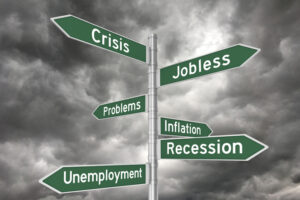The Road to Inflation in Post-COVID Times
The comments below are an edited and abridged synopsis of an article by Christopher Dembik
Covid-19 is a disinflationary impulse, but there is no consensus on what lies ahead. Some say the surge in money supply will inflate asset bubbles in real estate and the stock market, but will have little effect on the real economy. Others say the surge in money supply combined with a regime shift will create lasting inflationary pressures and push inflation above the 2% threshold.

Recent upside surprises in inflation data reflects data noise due to lockdowns and the ensuing recession. Strong CPI is likely a consequence of relative shifts in specific markets, rather than a general increase in prices. The jump in unit labour costs in Q2 is essentially due to more job losses among low-wage workers, thus causing distorting measurements.
There is another way to approach the inflation problem. Inflation has not disappeared from the real economy, it is still here, but it cannot be captured by CPI as it measures the average inflation in the economy.
Generational inequality is prevalent in society, and the level of inflation depends on which age group you belong to. Younger generations (Millennials and Gen-Z), who contribute most to society based on productivity measure, pay more than anyone else, and still have no access to capital.
By sacrificing the young and poor to save the old and rich, the Covid-19 crisis has exacerbated generational inequalities and anger towards Boomers. One way to solve this is for politicians to implement redistributive policies and other popular stimulus programs.
Inflation is a political phenomenon. Its evolution will depend on future policy decisions that will be taken after the crisis. Redistributive policies and other stimulus programs will likely play a key role in creating favourable conditions to an inflation episode once the recovery starts to materialize in 12 to 18 months.
By combining redistributive policies with supply chain relocation and rising protectionism, we have an almost perfect inflation narrative for 2022 and, beyond that, can (temporarily) overwhelm deflationary forces driven by demographics and technology.
